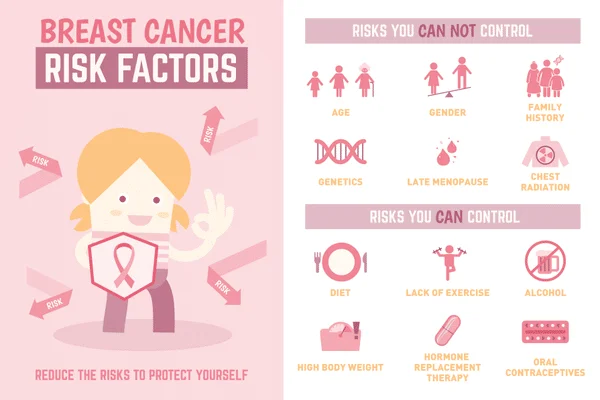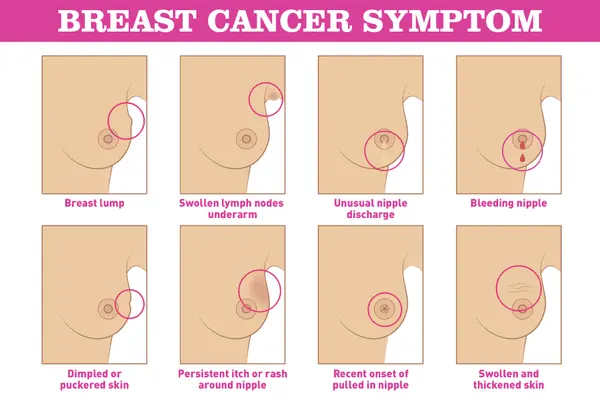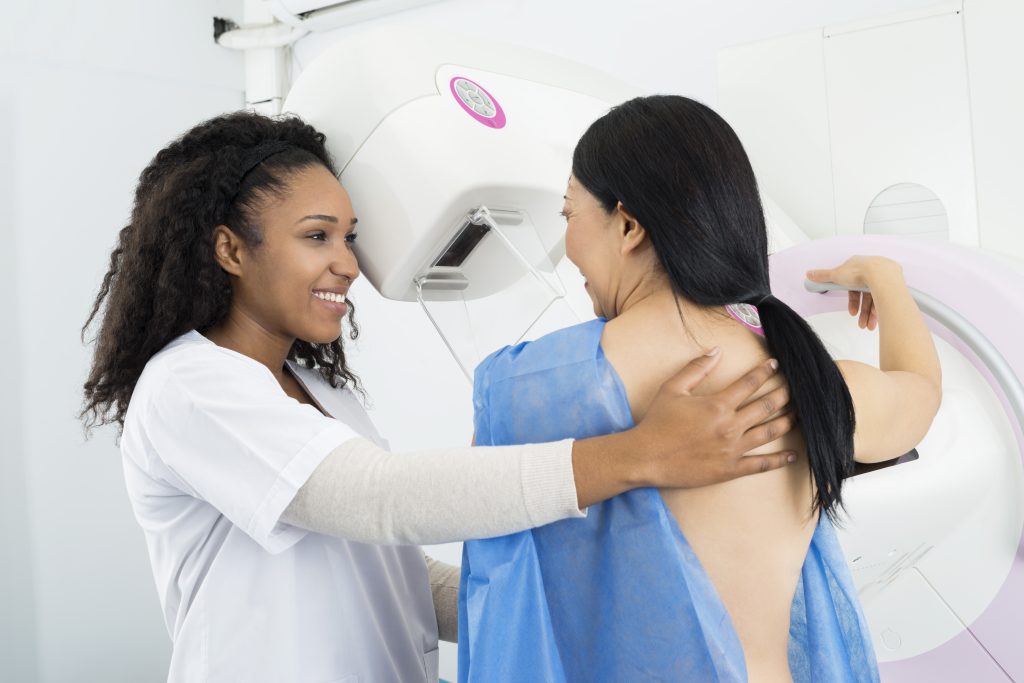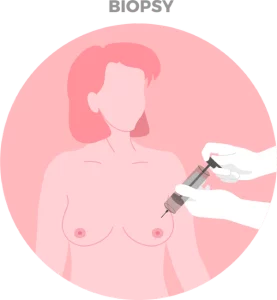



 Most masses seen on mammograms are benign (not cancerous). When a cancer is suspected, a needle biopsy of the breast mass is required to obtain tissue for microscopic analysis. Additional biopsy and placement of small marking clips inside the breast tissue (to locate the area of concern) may be required to confirm if enlarged/suspicious lymph nodes under the arm have been affected by the cancer.
Upon confirmation of the breast cancer diagnosis, additional testing will be performed to understand the subtype, tumour grading, expression of hormone receptors (estrogen and progesterone) and HER2 protein. These factors will aid the breast cancer specialist in creating a management plan for the patient.
Except for very small breast cancers, patients should undergo additional staging scans to determine the extent (or spread) of the cancer. Imaging that may be used include CT (computed tomography), bone scan, PET or MRI.
Most masses seen on mammograms are benign (not cancerous). When a cancer is suspected, a needle biopsy of the breast mass is required to obtain tissue for microscopic analysis. Additional biopsy and placement of small marking clips inside the breast tissue (to locate the area of concern) may be required to confirm if enlarged/suspicious lymph nodes under the arm have been affected by the cancer.
Upon confirmation of the breast cancer diagnosis, additional testing will be performed to understand the subtype, tumour grading, expression of hormone receptors (estrogen and progesterone) and HER2 protein. These factors will aid the breast cancer specialist in creating a management plan for the patient.
Except for very small breast cancers, patients should undergo additional staging scans to determine the extent (or spread) of the cancer. Imaging that may be used include CT (computed tomography), bone scan, PET or MRI.
 b). Hormonal Therapy
b). Hormonal Therapy
The Cancer Centre @ Paragon
290 Orchard Road #17-05/06
Paragon Medical (Lobby F)
Singapore 238859
The Cancer Centre @ Mount Elizabeth Orchard
3 Mount Elizabeth #12-11
Mount Elizabeth Medical Centre
Singapore 228510
(by appointment only)
The Cancer Centre @ Mount Elizabeth Novena
38 Irrawaddy Road #07-41
Mount Elizabeth Novena Specialist Centre
Singapore 329563

BOOK AN APPOINTMENT
新加坡医疗集团(SMG)成立于2005年,是一家拥有私人专家供应商网络的上市医疗机构,跨越美学、诊断性影像学与筛查学、肿瘤学以及妇幼保健四大支柱。SMG在新加坡境内拥有40多家诊所,战略性地分布在新加坡中部以及中心地带。而在新加坡外,SMG也于印度尼西亚、越南和澳大利亚拥有业务。在这里了解我们的隐私政策。 在此处了解我们的隐私政策。
